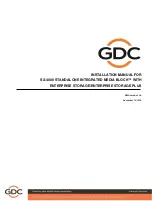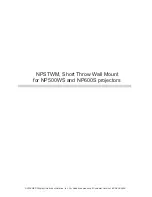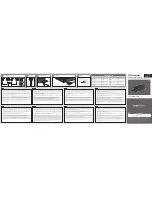
ETAS
Hardware Description
CBS10x.1-2 - User’s Guide
17
To signal an error state in the application circuit, an optocoupler, an LED or a
programmable logic controller (PLC) can be connected directly to the "ERROR"
error output .
Signaled error states
• As long as the sensor temperature is still below approx. 750 °C (rated:
780 °C) during the warm-up phase.
• If the AC1/AC2 supply voltage falls outside the allowed range.
• If the sensor is being cooled off too much or heated up further due to
external exhaust gas temperatures or the exhaust gas volume flow:
T
sensor
< 750 °C or T
sensor
> 800 °C
• If a short circuit of the sensor signals to the positive or negative supply
voltage occurs in the sensor or in the cable harness to the sensor or if a
line interruption occurs in the cable harness to the sensor.
2.2.7
Connections "AC1" and "AC2" (Voltage Supply)
The Smart Lambda Sensor Cables of the CBS10x.1-2 product family can be
supplied with a DC or AC voltage.
The electronics for the sensor heater is integrated in the cable so that the
LSU4.9 lambda sensor together with the Smart Lambda Sensor Cable is sup
-
plied by a common power supply.
Switching on the power supply
The supply voltage of the CBS10x.1-2 Smart Lambda Sensor Cables must be
supplied via a switching process.
The power supply of the CBS105.1-2 Smart Lambda Sensor Cable and the
external power supply for feeding the current interface can be switched on in a
random order.
TIP
Contrary to the industry standard (current interface 4 to 20 mA), the
CBS105.1-2 Smart Lambda Sensor Cable does not supply an increased cur
-
rent signal at the "AOUT" output in case of an error. An error case is signaled
at the "ERROR" connection.
TIP
Operating the current interface ("AOUT" output) of the CBS105.1-2 Smart
Lambda Sensor Cable requires an additional voltage supply. The current
interface is not supplied via the voltage supply of the Smart Lambda Sensor
Cable (connections "AC1" and "AC2")!
















































